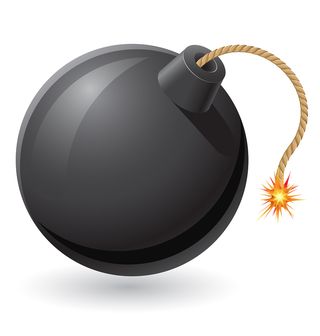In this series I am discussing the five major threats to qualified assets, today is Part 2 of the five-part series (you can read Part 1 here). The five major threats to qualified funds include income taxes (covered previously), excise taxes (which we will cover today), long term care costs, estate tax and risks to beneficiaries and/or their creditors. A major threat to IRAs and other qualified assets is the unexpected payment of excise taxes. Excise taxes are in addition are ordinary income taxes and are imposed when a client takes their money too soon, or waits too long to withdraw it. Let's address each one.
 There is a ten percent excise tax otherwise known as the "early withdrawal penalty" if an individual removes assets from their IRA prior to age fifty nine and a half. The government has done this because it has a strong interest to ensure individuals save for retirement so they are secure and less of a risk to be a burden on society to support them. The government in recent years however has permitted certain exceptions to allow withdrawals from IRAs before fifty nine and a half for the purchase of a home or to pay medical expenses. Both of these exceptions have limitations but when properly followed, avoid the extra ten percent excise tax.
There is a ten percent excise tax otherwise known as the "early withdrawal penalty" if an individual removes assets from their IRA prior to age fifty nine and a half. The government has done this because it has a strong interest to ensure individuals save for retirement so they are secure and less of a risk to be a burden on society to support them. The government in recent years however has permitted certain exceptions to allow withdrawals from IRAs before fifty nine and a half for the purchase of a home or to pay medical expenses. Both of these exceptions have limitations but when properly followed, avoid the extra ten percent excise tax.
Another long standing rule that avoids the excise tax, is what is commonly referred to as the 72(t) election. An IRA owner may withdraw prior to age fifty nine and a half without the excise tax if they agree to take an equal stream of payments over a period of time that is the greater of five years or when the IRA owner turns fifty nine and a half. For example if a 72(t) election is made to withdraw $300.00 a month from an IRA at age fifty, to avoid the excise tax, the recipient must agree to accept that monthly payment for nine and a half years. Alternatively, if an individual at the age of fifty seven elects to take a regular stream of payments, they must take it for a minimum of five years which would require them to continue the distributions until age sixty two.
A second excise tax which is much more costly is the fifty percent excise tax if an individual fails to take the minimum distribution required under the tax law. This is commonly referred to as the "late payment penalty". The government has preferential treatment for IRAs so that people can save for retirement, but wants to ensure that they actually utilize the funds in retirement, and not just use it as a tax avoidance tool. The tax law requires IRAs to begin being distributed once an individual turns seventy and a half years old. If the individual fails to take the required minimum distribution calculated based on their age and life expectancy, they are imposed to a fifty percent excise tax in addition to the ordinary income tax rate on the undistributed required minimum distribution.
Assuming a required minimum distribution was $1000.00 and an individual is in the twenty percent income tax bracket, the individual will lose seventy percent or $700.00 if the required distribution is not made timely. That is simply calculated as a $1000.00 distribution with a payment of $200.00 in income tax and $500.00 in excise tax. Obviously this is a major threat to IRAs but easy to avoid with proper management of accounts. Don't let excise taxes threaten your IRAs, ensure you leave the assets in until reaching age fifty nine and a half and begin taking the required minimum distribution when you turn seventy and a half.
Stay tuned for Parts 3-5. And, if you're interested in learning more on Protecting IRA's After Clark v. Rameker join our FREE webinar this Friday at 1 Eastern.
David J. Zumpano, Esq, CPA, Co-founder Lawyers With Purpose, Founder and Senior Partner of Estate Planning Law Center



Add a Comment